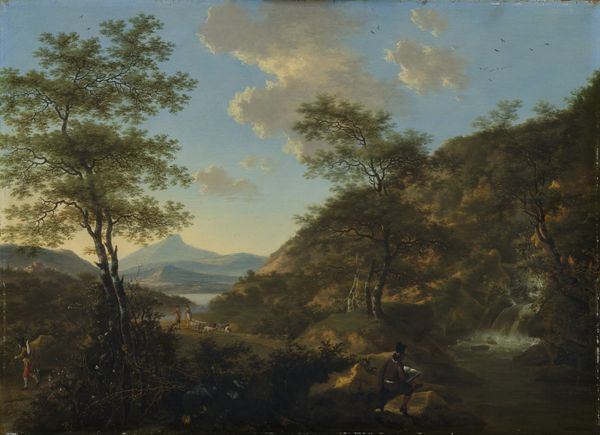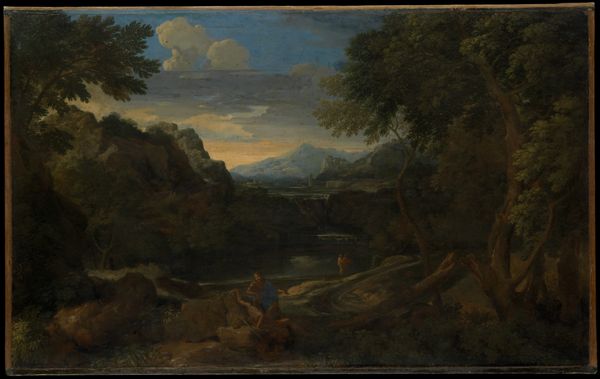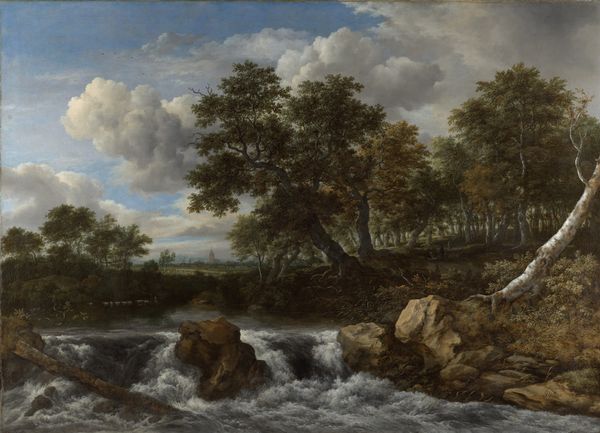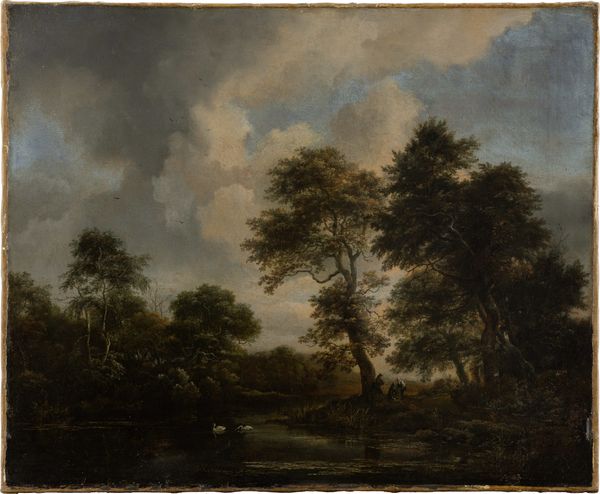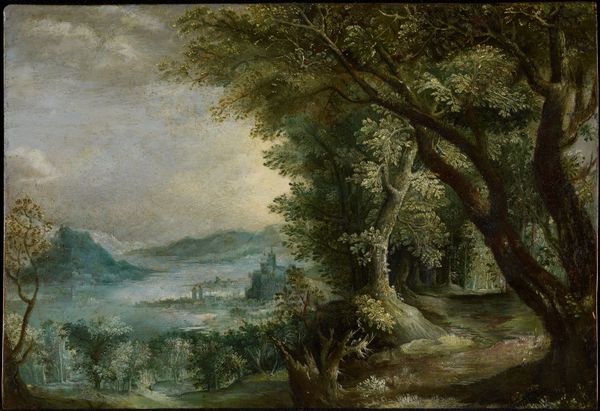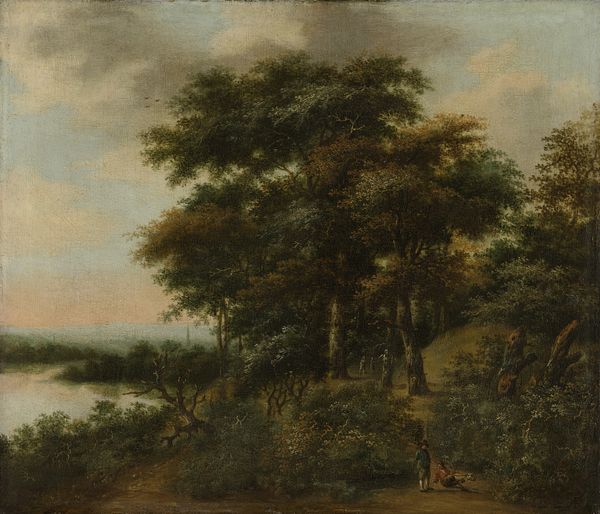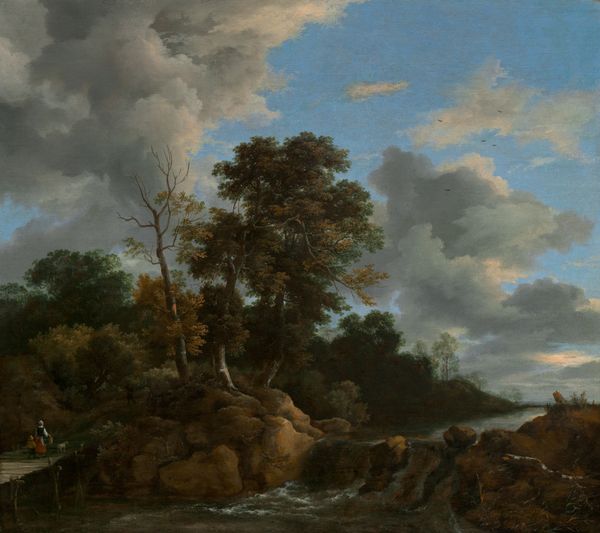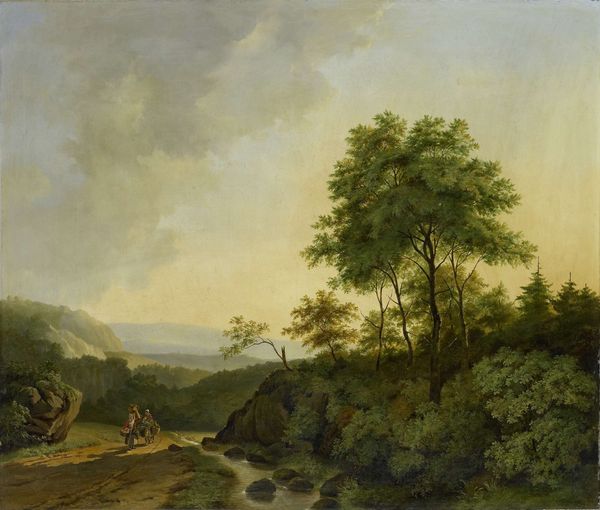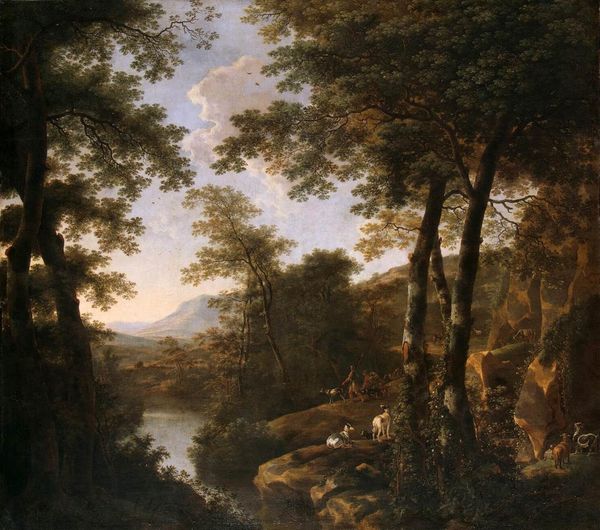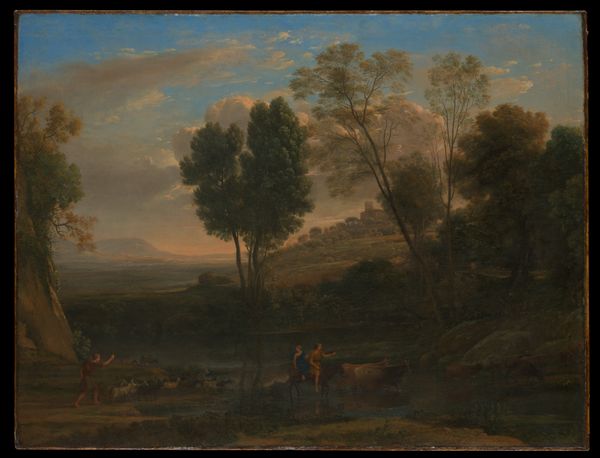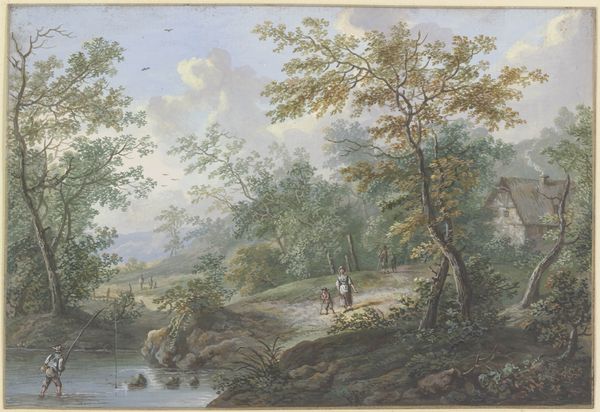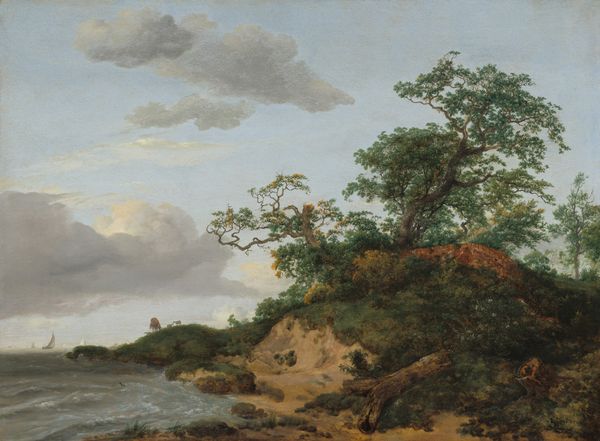
painting, oil-paint
#
baroque
#
dutch-golden-age
#
painting
#
oil-paint
#
landscape
#
genre-painting
Dimensions: 39 1/4 x 50 7/8 in. (99.7 x 129.2 cm)
Copyright: Public Domain
Curator: Take a moment with Jacob van Ruisdael’s “The Forest Stream,” created sometime between 1655 and 1665. Ruisdael masterfully used oil paint to capture this evocative Dutch landscape. Editor: It feels serene, doesn't it? A respite. But there's a weight in those clouds, a certain precarity suggested by the precarious angle of the tree on the right, like it's witnessed centuries of ecological tension. Curator: Absolutely, the materiality itself plays a role here. The layering of oil paints, the careful construction of depth through aerial perspective, reflects a culture grappling with its own place within a rapidly changing landscape. Think about the Dutch Golden Age; it’s built on global trade and industry. How do we reckon with this idealised nature against such an exploitative backdrop? Editor: Exactly. It's not just a pretty scene. It raises the question: Who gets access to this ‘nature’? While wealthy merchants commissioned landscapes like these for their homes, the working class faced deforestation and the social costs of capitalist expansion. This river would have served as a waterway for resources. It's a loaded image, when we begin to consider these socio-economic structures. Curator: I agree. The skillful brushwork creates an undeniably beautiful, seemingly untouched scene, but let's dig deeper into how that "untouched" quality is manufactured. What kind of labour was required to make this painting and others from this period? Editor: Right. The very pigment, the canvas itself – all are tied to material processes, extraction and trade. To ignore these material conditions is to sanitize the history. Curator: Consider also the symbolic significance of the forest stream itself. It can represent purity but it's also a life-source subject to pollution. Editor: It speaks to a complicated narrative. By appreciating the context we’ve discussed, perhaps it invites conversations around labour conditions that remain exploitative to this day. It pushes us to consider whose lands are impacted for art consumption in wealthier nations. Curator: The way Ruisdael manipulates the light is brilliant. I can spend much more time dwelling on the production, while noting his technical skill. Editor: Ultimately, it asks us to examine our own relationship to the natural world and our culpability within the power structures at play, both historically and presently.
Comments
No comments
Be the first to comment and join the conversation on the ultimate creative platform.
